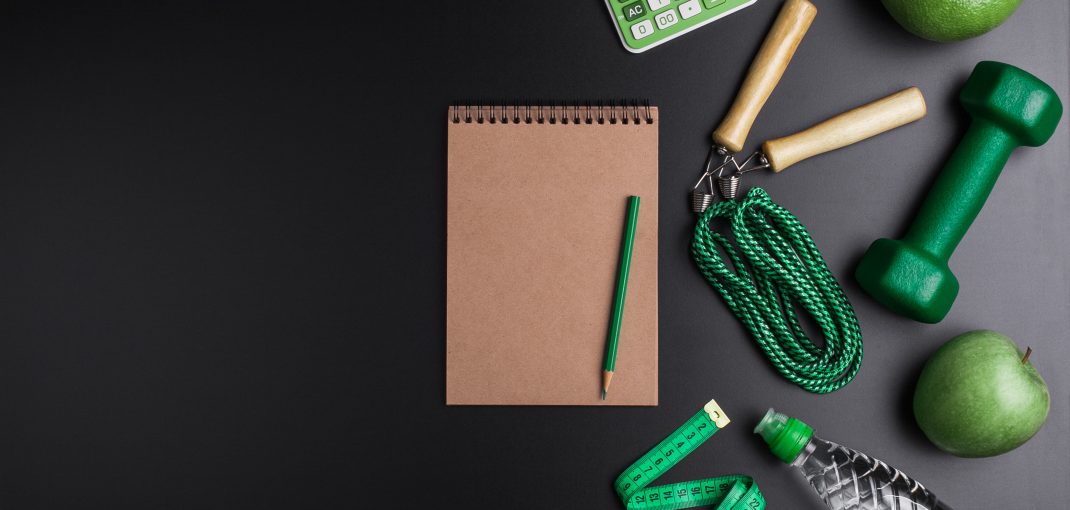TDEE Calculator: A Complete Guide to Calculating Your Daily Calorie Needs
Understanding your Total Daily Energy Expenditure (TDEE) is the cornerstone of any effective fitness or nutrition plan. Whether your goal is weight loss, muscle gain, or weight maintenance, a TDEE calculator provides valuable insights into how many calories your body needs each day.
We are going to walk you through step but step exactly what a TDEE calculator is, how it works, and why it’s an essential tool for your health journey. We will also explore factors that affect its accuracy, common myths and offer tips to maximize its benefits. The goal is to not only understand why you should know your TDEE, but how to realistically apply it to your fitness goals.
⚠️ Note: Step 3 is probably the most important step for using this calculator in a practical way. ⚠️
If you know what you’re doing already and want to skip all of that and get straight to the calculator below go ahead!
What Is TDEE?
TDEE stands for Total Daily Energy Expenditure. It represents the total number of calories your body burns in a day, including:
- Basal Metabolic Rate (BMR): Calories burned at rest for essential bodily functions (e.g., breathing, circulation).
- Thermic Effect of Food (TEF): Calories burned during digestion and nutrient absorption.
- Physical Activity: Calories burned through exercise and general movement.
- Non-Exercise Activity Thermogenesis (NEAT): Calories burned during daily activities like fidgeting, walking, or doing chores.
How Does a TDEE Calculator Work?
A TDEE calculator estimates your daily calorie needs by combining your BMR with your activity levels. Here’s how it works step-by-step:
Step 1: Calculate BMR
TDEE calculators typically use equations like the Mifflin-St Jeor or Harris-Benedict to determine your Basal Metabolic Rate. The formulas account for your age, gender, height, and weight. For example:
- Mifflin-St Jeor Formula:
- For men: BMR=10×weight (kg)+6.25×height (cm)−5×age (years)+5BMR = 10 \times \text{weight (kg)} + 6.25 \times \text{height (cm)} – 5 \times \text{age (years)} + 5BMR=10×weight (kg)+6.25×height (cm)−5×age (years)+5
- For women: BMR=10×weight (kg)+6.25×height (cm)−5×age (years)−161BMR = 10 \times \text{weight (kg)} + 6.25 \times \text{height (cm)} – 5 \times \text{age (years)} – 161BMR=10×weight (kg)+6.25×height (cm)−5×age (years)−161
Step 2: Factor in Activity Level
Once the BMR is calculated, it is multiplied by an Activity Multiplier to estimate TDEE. These multipliers reflect different levels of physical activity:
| Activity Level | Multiplier | Description |
| Sedentary | 1.2 | Little to no exercise. |
| Lightly Active | 1.375 | Light exercise/sports 1-3 days a week. |
| Moderately Active | 1.55 | Moderate exercise 3-5 days a week. |
| Very Active | 1.725 | Hard exercise 6-7 days a week. |
| Extremely Active | 1.9 | Very intense exercise of physical job. |
Step 3: Adjust for Goals
Like we mentioned before, this is the most important step. You can calculate your TDEE all day long, but if you don’t apply it to your fitness goal you won’t see the results you want.
Depending on your goal, the TDEE is adjusted:
- Weight Loss: If you want to lose weight, you need to be in a calorie deficit meaning you burn more calories a day than you eat. In this case, subtract 10-20% of your TDEE.
- Muscle Gain: If you want to gain muscle, you need to be in a calorie surplus, meaning you intake more calories than you burn in a day. In this case, add 10-20% to your TDEE.
- Maintenance: If you want to maintain your current body composition, you intake and burn the same amount of calories per day. In this case you would use the TDEE as is.
Everyone is different, but you have to do this over an extended period of time to see results. Just because you were in a calorie deficit for one day, does not mean you will wake up the next morning 1lb lighter on the scale. We cover more tips and tricks to realistically apply this into your routine below. 👇

Why Should You Use a TDEE Calculator?
1. Precision in Nutrition
A TDEE calculator gives you a baseline for calorie intake tailored to your unique body and activity level. This precision ensures you’re neither overestimating nor underestimating your caloric needs.
2. Supports Fitness Goals
- For Weight Loss: Ensures a sustainable calorie deficit without drastic reductions that can harm metabolism.
- For Muscle Gain: Provides the right surplus to build muscle without excessive fat gain.
- For Maintenance: Helps stabilize weight by matching calorie intake to expenditure.
3. Prevents Guesswork
Rather than relying on generic diet plans or calorie recommendations, a TDEE calculator offers a data-driven approach to nutrition.
4. Helps Monitor Progress
By recalculating TDEE as your weight, activity, or goals change, you can stay on track and adjust your plan accordingly.
Factors That Affect TDEE Accuracy
While TDEE calculators are useful tools, they are estimates and not immune to inaccuracies. Here’s what can impact their precision:
1. Variations in Metabolism
Metabolic rates differ from person to person due to genetics, body composition, and other factors. For example, individuals with more muscle mass burn more calories at rest than those with higher body fat percentages.
2. Over- or Underestimating Activity Levels
Many people misjudge their activity level, leading to incorrect TDEE estimates. For instance, walking a few times a week may not qualify as “moderately active.”
3. Changes in Body Weight
As you lose or gain weight, your TDEE changes. Regular recalibration is necessary to maintain accuracy.
4. Impact of Hormonal Imbalances
Conditions like hypothyroidism, PCOS, or menopause can alter calorie needs, making calculator estimates less accurate.
5. Adaptive Thermogenesis
Prolonged dieting can cause the body to adapt by lowering metabolic rate, resulting in a lower TDEE than initially calculated.

How to Use a TDEE Calculator Effectively
1. Be Honest About Activity Levels
Choose the activity multiplier that best reflects your lifestyle. Overestimating can lead to overeating, while underestimating can result in unnecessary calorie restriction.
2. Regularly Reassess
Update your TDEE calculation as your weight, fitness level, or goals change. What worked when you weighed 200 pounds may not work at 180 pounds.
3. Pair It With Food Tracking
Use apps or journals to track your calorie intake and compare it to your TDEE. This helps ensure you’re staying within your target range.
4. Monitor Results
Track changes in weight, energy levels, and performance. If your progress stalls, adjust your intake or activity level accordingly.

Why TDEE Calculators May Not Be Perfect
1. Lack of Individualization
TDEE calculators don’t account for all variables, such as body composition or stress levels, which can significantly impact calorie needs.
2. Limited Consideration of NEAT
Non-exercise activity thermogenesis (e.g., fidgeting, walking) varies greatly between individuals and can make up a significant portion of TDEE.
3. Difficulty Accounting for TEF
The thermic effect of food varies based on macronutrient composition. Protein, for instance, requires more energy to digest than fats or carbs.
TDEE Calculator vs. BMR Calculator: What’s the Difference?
While both calculators are useful, they serve different purposes:
- BMR Calculator: Estimates the calories needed to sustain basic bodily functions at rest.
- TDEE Calculator: Accounts for BMR plus calories burned from activity and digestion, providing a more comprehensive view of daily energy needs.
Practical Tips for Calorie Management Using TDEE
1. Create a Realistic Deficit or Surplus
For weight loss, aim for a 500-750 calorie deficit. For muscle gain, a 250-500 calorie surplus is more sustainable and minimizes fat gain.
2. Adjust Based on Results
If you’re not seeing results after 2-4 weeks, revisit your TDEE calculation and adjust accordingly.
3. Combine with Strength Training
Strength training increases muscle mass, which boosts your BMR and overall TDEE over time.
Common Myths About TDEE Calculators
1. “TDEE Is Static”
Your TDEE changes with your weight, muscle mass, and activity level. Regular updates are essential.
2. “The Calculator Knows Best”
Use the calculator as a starting point, but listen to your body and adjust based on real-world results.
3. “More Exercise Equals Unlimited Calories”
While exercise increases calorie burn, excessive eating can still lead to weight gain, even with high activity levels.
Conclusion: The Power of a TDEE Calculator
A TDEE calculator is a game-changing tool for anyone looking to optimize their nutrition and achieve their health goals. By providing a detailed estimate of your daily caloric needs, it removes guesswork and allows for a personalized approach to weight management, muscle gain, or maintenance.
While not perfect, when used correctly and paired with consistent tracking and adjustments, a TDEE calculator can set you on the path to success. Take control of your health today by calculating your TDEE and starting your journey to a fitter, healthier you!
Share this with a friend below on any platform.
This article may contain affiliate links, meaning we may receive a commission from purchases at no additional cost to you. See our disclosures page here.
Editor’s Note: The information and advice provided on Fit Kulture are intended for general informational purposes only. While we strive to deliver accurate, research-backed content, we are not medical professionals, and our content should not be considered a substitute for professional medical advice, diagnosis, or treatment.
Always consult a qualified healthcare provider or physician for specific concerns regarding your health, fitness, or nutrition. Your health is unique, and what works for one person may not be suitable for another. Use the information here responsibly and at your own discretion. Stay healthy and informed!








